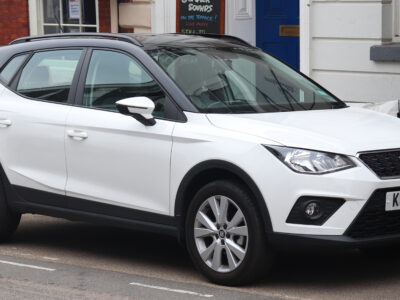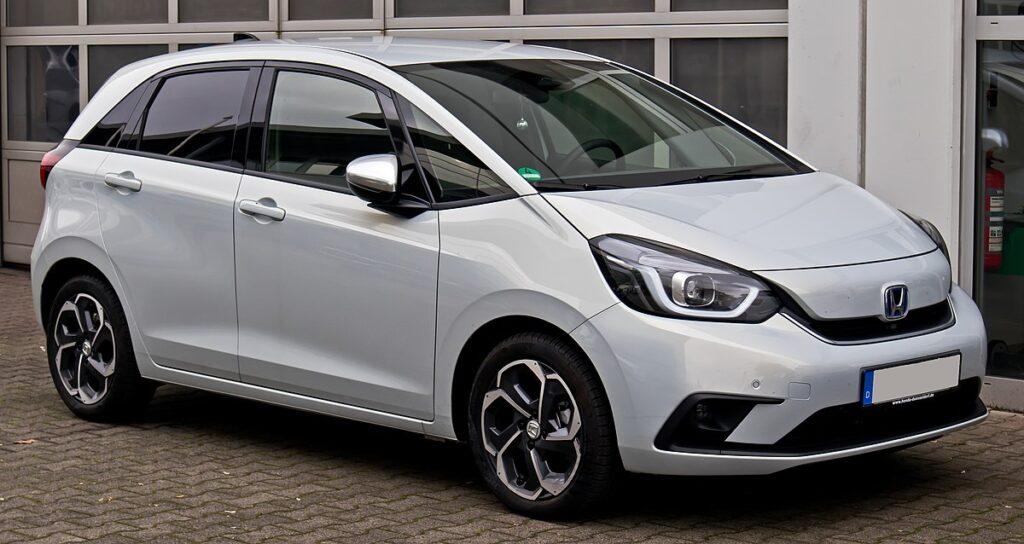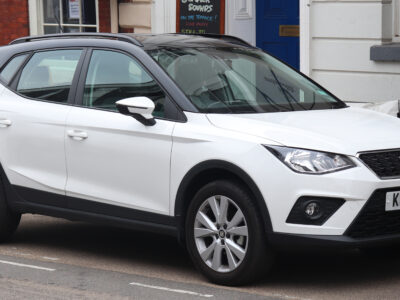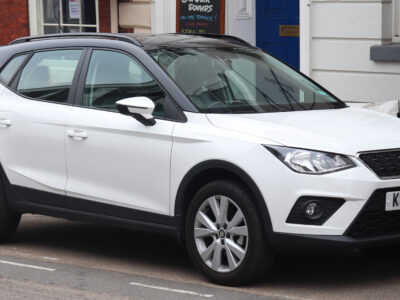
Honda Jazz Boot Space & Practicality: The Ultimate Guide

When it comes to compact hatchbacks that blend versatility, smart design, and impressive interior flexibility, the Honda Jazz stands in a league of its own. In this guide, we’ll explore everything that makes the Jazz one of the most practical small cars on the road — from its boot space and Magic Seats to clever storage, comfort, and parking ease.
- Overview: Why the Honda Jazz Excels in Practicality
- Honda Jazz Boot Space Dimensions
- Magic Seats: Honda’s Genius Space Innovation
- Interior Space and Comfort
- Storage Solutions Throughout the Cabin
- Real-World Boot Use: What Fits Inside
- Comparison: Honda Jazz vs. Competitors
- Ease of Loading and Boot Design
- Hybrid System and Space Trade-off
- Is the Honda Jazz Easy to Park?
- Safety and Build Quality
- Verdict: Why the Honda Jazz Stands Out
- Final Thoughts
Overview: Why the Honda Jazz Excels in Practicality
The Honda Jazz has earned its reputation as one of the most spacious and cleverly designed hatchbacks in the B-segment. Despite its compact exterior, its interior packaging rivals larger vehicles, making it a top pick for families, urban commuters, and those who demand functionality without compromising on comfort.
Honda Jazz Boot Space Dimensions
| Configuration | Boot Volume | Notes |
|---|---|---|
| Rear seats up | 304 litres | Slightly reduced due to hybrid system |
| Rear seats folded (to window line) | 844 litres | Ideal for mid-sized luggage or sports gear |
| Rear seats folded (to roof) | 1,205 litres | Maximum capacity for bulky or tall items |
Even with the hybrid battery slightly eating into the luggage area (about 50 litres less than its predecessor), the Jazz still offers an impressively usable boot. The flat floor and low loading lip make it easy to load heavy items like suitcases or shopping bags.
Magic Seats: Honda’s Genius Space Innovation
Honda’s Magic Seats system is the secret weapon behind the Jazz’s superior practicality. Unlike standard folding rear seats, these can:
- Fold flat into the floor for a completely level load area
- Flip upwards cinema-style to carry tall or awkward items (like plants or bicycles)
- Fold the front passenger seat flat for extra-long objects like surfboards or ladders
This gives the Jazz a flexibility unmatched in most competitors, turning a small hatchback into a miniature van when needed.
Interior Space and Comfort
Inside, the Honda Jazz surprises with exceptional passenger comfort:
- Headroom: Generous for both front and rear passengers
- Legroom: Nearly 1 metre in the back, rivaling some midsize sedans
- Seat comfort: Redesigned rear seats with improved padding
- Visibility: Expansive glasshouse creates a light, airy cabin
Even tall passengers can sit behind tall drivers comfortably, a rare feat for cars in this class. The interior also includes dual USB ports, a spacious central armrest box, dashboard cupholders, and a split-level glovebox for optimized organization.
You may be interested in reading Honda Jazz Warning Lights and Dashboard Symbols Explained (2001–2024)
Honda Jazz Warning Lights and Dashboard Symbols Explained (2001–2024)Storage Solutions Throughout the Cabin
The Jazz makes use of every available inch:
- Large centre armrest box for small electronics
- Three additional cubbies in the centre tunnel
- Two large dashboard-mounted cupholders placed at driver-friendly height
- Split glovebox offering tiered storage
This thoughtful approach makes the Jazz feel like a vehicle designed for everyday usability, not just efficiency.
Real-World Boot Use: What Fits Inside
In real-world testing, the Honda Jazz’s 304-litre boot easily fits:
- Nine grocery bags with the rear seats upright
- Two medium suitcases plus a duffel
- A folded baby stroller
- A full set of golf clubs (with the Magic Seats folded)
It’s proof that the Jazz’s space is more functional than its numbers suggest, thanks to its clever geometry and completely flat load bay.
Comparison: Honda Jazz vs. Competitors
| Model | Boot Space (Seats Up) | Seats Folded | Special Feature |
|---|---|---|---|
| Honda Jazz | 304 L | 1,205 L | Magic Seats |
| Skoda Fabia | 380 L | 1,190 L | Largest in class |
| Toyota Yaris Hybrid | 286 L | 947 L | Compact hybrid |
| Ford Fiesta | 311 L | 1,093 L | Conventional layout |
| Hyundai i20 | 352 L | 1,165 L | Practical boot design |
While the Skoda Fabia technically offers a larger boot by volume, the Honda Jazz wins in versatility. Its Magic Seats system gives it the flexibility of a crossover while keeping the compact footprint of a city hatchback.
Ease of Loading and Boot Design
Honda has engineered the Jazz’s boot with real-life practicality in mind:
- Low load lip height: Makes it easy to lift items in and out
- Wide tailgate opening: Simplifies loading large or boxy objects
- Flat boot floor: Prevents items from sliding
- Square shape: Maximizes usable area for awkward cargo
Hybrid System and Space Trade-off
The hybrid drivetrain slightly reduces boot capacity compared with older petrol-only Jazz models. However, Honda cleverly placed the battery under the rear seats, ensuring minimal intrusion into the load area while keeping a balanced weight distribution.
You may be interested in reading Honda Jazz Warning Lights and Dashboard Symbols Explained (2001–2024)
Honda Jazz Warning Lights and Dashboard Symbols Explained (2001–2024) How to Reset the TPMS Light on a Honda Jazz (UK Guide)
How to Reset the TPMS Light on a Honda Jazz (UK Guide)The result? A hybrid that’s still one of the most practical superminis available.
Is the Honda Jazz Easy to Park?
Despite its tall body and spacious interior, the Jazz remains city-friendly:
- Compact footprint for tight parking spaces
- Large glass area for superior visibility
- Available parking sensors and rear camera on higher trims
- Light steering and smooth throttle response
Even though there’s no automated parking assist, its tight turning circle and short overhangs make urban manoeuvring a breeze.
Safety and Build Quality
Honda prioritizes safety and rigidity:
- High-strength steel frame improves crash protection
- 10 airbags standard, including a front centre airbag
- Five-star Euro NCAP safety rating
- Advanced Honda Sensing driver-assist suite, including:
- Adaptive cruise control
- Lane keeping assist
- Road departure mitigation
- Traffic sign recognition
- Blind spot monitor (EX trim)
This makes the Jazz not just practical — but one of the safest cars in its class.
Verdict: Why the Honda Jazz Stands Out
The Honda Jazz combines ingenious design with real-world practicality that few rivals can match. Its 304–1,205 litres of flexible boot space, Magic Seat system, and hybrid efficiency make it ideal for anyone needing a car that’s compact yet astonishingly roomy.
Key Takeaways
- Boot space: 304–1,205 litres
- Magic Seats: Flat-folding, upward-folding, and long-load modes
- Rear legroom: Nearly 1 metre
- Safety: 5-star Euro NCAP
- Perfect for: Families, city drivers, and anyone valuing space efficiency
Final Thoughts
We believe the Honda Jazz sets the benchmark for boot space and versatility in the small car segment. Whether you’re hauling shopping, luggage, or even a bicycle, the Jazz proves that compact doesn’t have to mean cramped — it’s practicality perfected.
You may be interested in reading Honda Jazz Warning Lights and Dashboard Symbols Explained (2001–2024)
Honda Jazz Warning Lights and Dashboard Symbols Explained (2001–2024) How to Reset the TPMS Light on a Honda Jazz (UK Guide)
How to Reset the TPMS Light on a Honda Jazz (UK Guide) How to Reset the Service Warning Light on Your Honda Jazz (2008–2015)
How to Reset the Service Warning Light on Your Honda Jazz (2008–2015)If you want to know other articles similar to Honda Jazz Boot Space & Practicality: The Ultimate Guide you can visit the category Service and Parts.
Deja una respuesta






More content of your interest